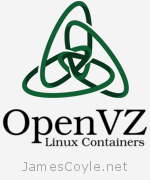Install an OpenVZ Server on CentOS
Category : How-to
 OpenVZ servers are hypervisors which allow you to create numerous guest instances within a single hardware node. Unlike other products which offer full hardware virtualisation, OpenVZ creates containers – isolated program execution environments – that share the hardware nodes kernel.
OpenVZ servers are hypervisors which allow you to create numerous guest instances within a single hardware node. Unlike other products which offer full hardware virtualisation, OpenVZ creates containers – isolated program execution environments – that share the hardware nodes kernel.
OpenVZ works very differently to the more mainstream hypervisors like VMWare’s ESXI, KVM or Xen and therefore comes with some benefits as well as a few problems. In the benefit category, the big one is performance. OpenVZ containers loose very little power from what is available on a bare metal machine. The big drawback is that an OpenVZ container can only run Linux guests because each guest is actually using the hardware nodes kernel.
OpenVZ recommends running an OpenVZ server on Red Hat Linux, or one of it’s derivitives such as CentOS. Before starting this tutorial, make sure that you have a freshly installed CentOS server with terminal access. For this example, I’m going to use a fresh install of CentOS 6.5.
There are three stages to the installation of the OpenVZ software; install the OpenVZ kernel, configure system parameters and install the OpenVZ tools.
Install the OpenVZ kernel
All of the packages required to install an OpenVZ server are available in a repository which needs to be added to yum. Once this is complete, you can use yum to install all of the OpenVZ packages, including the kernel. Using this method, we can also keep our packages up to date as future releases are made available by the OpenVZ team.
Download the OpenVZ repository details and add the GPG key which is used to sign each package.
wget -P /etc/yum.repos.d/ http://ftp.openvz.org/openvz.repo rpm --import http://ftp.openvz.org/RPM-GPG-Key-OpenVZ
We can now install the OpenVZ kernel by running the below command. Type y when prompted to begin the download and installation.
yum install vzkernel
Configure system parameters
We need to configure various system parameters for OpenVZ to work, especially on the networking side.
Open up the sysctl.conf file.
vi /etc/sysctl.conf
Either add or amend the following settings.
# packet forwarding enabled and proxy arp disabled net.ipv4.ip_forward = 1 net.ipv6.conf.default.forwarding = 1 net.ipv6.conf.all.forwarding = 1 net.ipv4.conf.default.proxy_arp = 0 # Enables source route verification net.ipv4.conf.all.rp_filter = 1 # Enables the magic-sysrq key kernel.sysrq = 1 # We do not want all our interfaces to send redirects net.ipv4.conf.default.send_redirects = 1 net.ipv4.conf.all.send_redirects = 0
OpenVZ needs SELinux to be disabled. Open up the selinux config file and make the SELINUX attribute disabled.
vi /etc/sysconfig/selinux
For example:
This file controls the state of SELinux on the system. # SELINUX= can take one of these three values: # enforcing - SELinux security policy is enforced. # permissive - SELinux prints warnings instead of enforcing. # disabled - No SELinux policy is loaded. SELINUX=disabled # SELINUXTYPE= can take one of these two values: # targeted - Targeted processes are protected, # mls - Multi Level Security protection. SELINUXTYPE=targeted
Install OpenVZ tools
Once the kernel is set up we need to install the OpenVZ tools for creating and managing an OpenVZ server.
yum install vzctl vzquota
You can now reboot your machine. When your machine starts up, make sure that the OpenVZ kernel is loaded with the uname -r command. The result should be similar to below, although the version numbers will change with time.
# uname -r 2.6.32-042stab084.26
And that’s it! You now have an OpenVZ server up and running.
See Basic container management for details on creating your first CT.